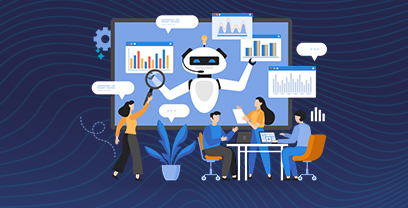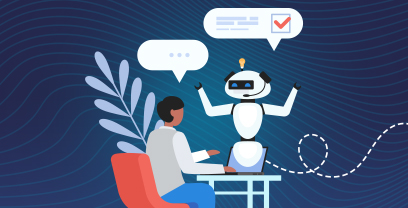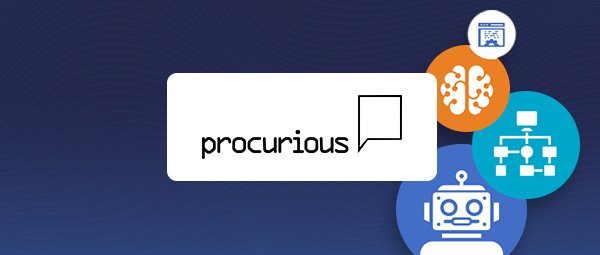In our previous posts (part 1, part 2), we explored the potential of AI agents in procurement, how they can drive efficiency, and the organizational changes required to adopt them effectively.
Now, we turn to a crucial but often overlooked piece of the AI puzzle: Where do these AI agents get their data, and how do you ensure it’s accurate and compliant?
Imagine attempting to navigate a complex road network without accurate GPS data. No matter how smart your vehicle’s technology is, if the map is outdated or fragmented, you’ll end up lost. AI agents operate in much the same way. Even the most advanced AI solutions will struggle or fail if they rely on random or siloed data scattered across the organization. This is why a unified procurement platform—one that centralizes and standardizes data across the Source-to-Pay (S2P) lifecycle—remains indispensable and is core to making the case for Agentic AI in procurement.
Key Takeaways:
- AI agents can work on multiple tools, but uncoordinated operation often leads to inefficiencies.
- Without a centralized platform to align workflows, data, and regulations, independent agents might deliver inconsistent or counterproductive results.
- A unified procurement platform ensures that agents function as part of an integrated system.
The Pitfalls of Agentic AI in Procurement
Below, we delve into why “random AI agents” can’t simply function on their own, and how a single source of truth underpins the success of Agentic AI in Procurement
An AI agent can be exceptionally good at a specific task—like reading a document, researching the web, accessing data or combining multiple agents to assess an RFP, suggest a supplier, analyzing pricing, assist supplier onboarding, etc—but without reliable, continuous access to accurate data, it’s operating in a vacuum. Here are a few ways such agents can fail:
- Data Fragmentation: If each AI agent is pulling data from a different source—some might rely on an old ERP system, others on a financial tool, and still others on supplier emails—there’s no guarantee the information is consistent or up-to-date. This fragmentation leads to contradictory outputs and confusion about which version of the “truth” is correct.
- Process Disconnect: Procurement processes don’t happen in isolation. For example, a single contract negotiation might involve supplier performance data, legal terms, payment histories, and risk assessments. When AI agents operate independently without integrating these factors, they fail to capture the full context of the decision-making process. This siloed approach can lead to suboptimal outcomes—or worse, potentially risky decisions.
- Non-Compliance: Many industries have strict rules around data governance, privacy, and procurement practices. If AI agents operate without standardized guidelines—such as who can access what information and how decisions are logged—organizations could face compliance issues. Without a core system to track and manage these rules, the risk of non-compliance escalates.
The Importance of a Single Source of Truth
To address the Agentic AI challenges listed above, procurement needs a central platform that orchestrates data and processes across Source-to-Pay. This platform isn’t just another piece of software; it’s the foundation upon which AI agents rely.
- Data Consistency and Accuracy: A single source of truth ensures that all AI agents draw from the same dataset—whether that’s supplier performance metrics, contract terms, purchase orders, or invoices. Because the platform enforces data standards (e.g., naming conventions, data formats), every new data point is verified and stored consistently. AI agents can then access real-time, high-fidelity information, boosting the reliability of their insights.
- Cross-Functional Visibility: Procurement rarely happens in a bubble. Finance teams, legal teams, and operations all play a role. A unified platform provides a 360-degree view of every transaction and contract, allowing AI agents to consider inputs from multiple functions. This cross-functional context is key to more nuanced recommendations—like identifying a potential savings opportunity that also meets strict compliance or sustainability criteria.
- Centralized Policy Enforcement: A procurement platform can include company policies, approval workflows, and regulatory constraints. AI agents automatically inherit these rules, which means they only recommend actions that align with the organization’s standards. This embedded compliance layer drastically reduces the risk of rogue spending or non-compliant sourcing activities.
- Audit Trails and Accountability: Regulators and executives alike want to know why a particular decision was made. A unified platform logs every action, from the data an AI agent accessed to the final approval step. This auditability is essential in highly regulated sectors, where demonstrating the chain of decision-making can make or break compliance efforts.
Connecting AI Agents to a Core Platform
We’ve learned that Agents connected to core processes and data is the foundation for successful deployment in procurement. How can you ensure your AI agents are seamlessly integrated with your procurement processes and data?
- Robust APIs and Integration: The best platforms are built with integrations in mind; they offer well-documented application programming interfaces (APIs) that let AI agents seamlessly pull and push data. Rather than building one-off, fragile connections, organizations should establish secure, scalable integration frameworks.
- Real-Time Data Sync: AI agents thrive on up-to-date information and your platform should support real-time or near-real-time synchronization across S2P. Changes in data, such as contract terms or supplier data, are immediately visible. If an agent is recommending a supplier but the data is outdated, you’re undermining the effectiveness of the sourcing strategy.
- Unified Data Models; By defining consistent schemas—like standard naming conventions for suppliers, products, or cost centers—you eliminate guesswork for AI agents. A unified data model means AI agents never have to reconcile conflicting formats or guess which data field corresponds to what. Platforms or solutions operating with multiple data models impact the consistency and accuracy of agents.
Ensuring Compliance and Data Standards
Procurement involves numerous regulatory considerations: anti-bribery laws, data privacy regulations like GDPR, environmental standards, and more. A random assortment of AI agents that don’t share a compliance framework can inadvertently place your organization at risk. Here’s how Ivalua’s single source of truth keeps you covered:
- Policy-Driven Workflows: Automated workflows built into the platform ensure that each sourcing event or contract approval route follows the correct path. AI agents simply attach to these established workflows, rather than creating new, unvetted ones.
- Access Controls: A centralized platform controls who can view what. Sensitive data—like confidential pricing terms or supplier financials—can be shielded behind role-based permissions. Each AI agent is treated like any other user, needing explicit authorization to view or act on sensitive information.
- Regulatory Alignment: When compliance rules change (e.g., new data localization laws), you only need to update the core platform. All integrated AI agents immediately inherit these changes, rather than requiring a patchwork of individual updates.
For more info on one, unified platform, check out our Procurement Platform Datasheet–the strategic backbone for your organization!
Why Random Agents Alone Will Disappoint
It’s tempting to imagine a future where AI agents freely roam the enterprise, tapping into whatever data they need through ad-hoc APIs. While that may sound agile, it often leads to sprawling integrations and inconsistent data handling. Consider the following pitfalls:
- Uncoordinated Decision-Making: Without a centralized view, AI agents might clash—one could be negotiating a contract without realizing another agent is already working with the same supplier. Such duplications waste time and can erode supplier trust.
- High Maintenance: Each standalone integration can break whenever systems update or data formats change. In a large organization, you might juggle dozens of AI tools, each requiring separate maintenance and oversight.
- Scaling Challenges: As your sourcing requirements or business lines grow, each AI agent needs more data and more complex decision-making capabilities. A single platform that scales alongside your business is far more efficient than trying to retrofit multiple agents into new, expanded roles.
Final Thoughts
The power of AI agents in procurement is undeniable—they can analyze vast amounts of data, speed up decisions, and uncover savings opportunities that humans might miss. But the underlying foundation for these agents—the core procurement platform—is what truly determines whether they deliver on their promise or become another piece of disconnected technology.
By consolidating data, codifying processes, and embedding compliance frameworks, a unified source-to-pay system ensures every AI agent operates in harmony with the organization’s goals and standards. It offers a single, reliable source of truth that not only fuels more accurate insights but also safeguards against risks tied to fragmented data and siloed decision-making.
As you explore the potential of AI agents, remember this fundamental principle: without a strong, centralized platform anchoring the S2P journey, even the smartest AI agents will struggle to produce sustainable, trustworthy results.
FAQ‘s
What is a “Random” AI Agent”?
A random AI agent refers to an artificial intelligence system that operates based on chance rather than logic, rules, or pre-defined strategies. Unlike traditional AI models designed to make decisions using structured algorithms, random AI agents rely on probabilistic or randomized outputs without specific goals or patterns.
What ensures data security with AI agents in procurement?
Data security is maintained through:
- Role-Based Access Control to manage permissions and shield sensitive data.
- Policy-Driven Workflows that enforce secure processes.
- Centralized Updates that ensure regulatory alignment and reduce vulnerabilities.
What should procurement teams consider when implementing AI technology?
Procurement teams should:
- Invest in an S2P platform that centralizes and organizes data.
- Ensure AI agents are tightly integrated with existing workflows.
- Regularly monitor compliance, scalability, and performance for continuous improvement.
Further Reading
Whitepapers:
- Powering Procurement Transformation with Autonomous AI Agents
- Generative AI in Procurement A Practical Guide to Building Your Roadmap
Blogs:
- Part 1: The Arrival of AI Agents in Procurement – Understanding the Basics
- Part 2: Implementing AI Agents in Procurement: Best Practices & Strategies
- Embracing Gen AI and Building Resilience for the Future
- Leveraging Generative AI to Transform Procurement in the Middle East
- Accelerating Adoption of Generative AI in Procurement
- Transforming Procurement with Generative AI: A Practical Approach
Datasheet




